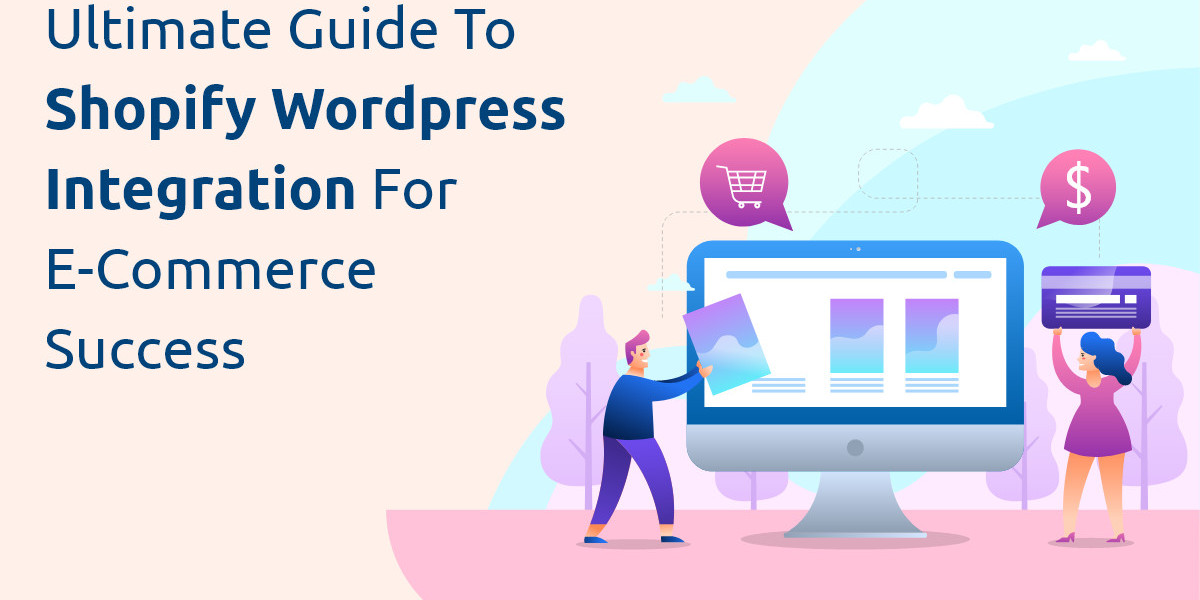Integrating Shopify with WordPress combines the strengths of both platforms, offering the power of Shopify’s e-commerce functionality alongside WordPress’s flexible content management. Discover the ultimate roadmap to seamless e-commerce success with our comprehensive guide on Shopify WordPress Integration. Elevate your online business effortlessly! In this guide, we’ll explore how to successfully integrate these platforms and unlock new opportunities for your e-commerce business.
Why Integrate Shopify with WordPress?
Shopify’s E-commerce Superiority
Shopify is a leading e-commerce platform designed specifically for selling products online. It offers robust features like secure payment gateways, product management, inventory tracking, and marketing tools that allow entrepreneurs to focus on growing their business. Shopify’s simplicity and scalability make it a popular choice for e-commerce businesses.
WordPress’s Content Power
WordPress, on the other hand, is the most popular CMS globally, favored for its flexibility in content creation and its vast selection of themes and plugins. While it’s not a dedicated e-commerce platform, WordPress excels at blog management, SEO optimization, and design customization, giving users more control over their website's look and feel.
Combining the Best of Both Worlds
By integrating Shopify and WordPress, you can leverage the strengths of both platforms: Shopify for selling products and handling transactions, and WordPress for managing content and building a visually appealing website. This integration allows businesses to benefit from Shopify's e-commerce features without sacrificing WordPress’s customization and SEO capabilities.
Methods of Shopify WordPress Integration
There are multiple ways to integrate Shopify with WordPress, depending on your specific business needs. Here are the most common methods:
1. Shopify Buy Button
The Shopify Buy Button allows you to embed individual products or collections from your Shopify store into your WordPress site. This is a simple and cost-effective solution for smaller businesses or those who don’t need a fully functional e-commerce site but still want to sell products.
Pros:
- Easy to implement.
- No need to switch platforms or migrate content.
- Minimal cost as it’s included in lower-tier Shopify plans.
Cons:
- Limited in scope – primarily for small stores.
- No cart functionality beyond the basics.
2. Shopify Plugin for WordPress
Shopify offers an official plugin for WordPress, enabling easy integration between the two platforms. This plugin allows you to manage your Shopify store within your WordPress dashboard and display products seamlessly on your WordPress pages.
Pros:
- Direct integration between Shopify and WordPress.
- Manage products and orders without leaving WordPress.
- SEO-friendly.
Cons:
- Requires some technical setup.
- May not be as feature-rich as using Shopify’s full platform.
3. Full Shopify Store with WordPress Blog
For businesses that need more robust e-commerce functionality, another option is to use Shopify to handle the e-commerce side and WordPress for managing content. In this setup, your store operates on Shopify while your blog and other content run on WordPress. This setup can be achieved by linking the two platforms together using subdomains or custom themes.
Pros:
- Full e-commerce functionality with Shopify’s powerful tools.
- Complete control over content and design with WordPress.
Cons:
- Requires more technical expertise to implement.
- Managing two platforms may be complex for some users.
Step-by-Step Guide to Shopify WordPress Integration
Now that we’ve explored the integration options, let’s dive into the step-by-step process of integrating Shopify with WordPress using the Shopify Buy Button and Plugin.
1. Create Your Shopify Store
The first step is to set up your Shopify store. If you haven’t done this yet, head over to Shopify and create an account. You’ll need to add your products, set up payment gateways, and configure shipping options. Once you’ve completed the basic setup, your store will be ready for integration.
2. Install the Shopify Buy Button Plugin
If you’re using the Buy Button method, go to your Shopify dashboard, and select Buy Button from the sales channels. From there, generate a Buy Button for any product or collection you want to display on WordPress. Shopify will provide an embed code that you can copy.
3. Embed Buy Button in WordPress
To embed your Shopify Buy Button, go to your WordPress dashboard and create a new page or post. Switch to the Text or HTML editor, and paste the code provided by Shopify. This will display the product or collection on your WordPress page with all the necessary e-commerce functionality (add to cart, checkout, etc.).
4. Install the Shopify WordPress Plugin
If you prefer using the official Shopify Plugin, you’ll need to install it from the WordPress plugin directory. After installation, activate the plugin and follow the instructions to connect it to your Shopify store. Once connected, you can use shortcodes to display products or collections on any page or post.
5. Customize the Design and Functionality
After embedding the Buy Button or installing the plugin, customize the appearance to match your website’s design. Both the Buy Button and plugin allow for basic customization like changing button colors, product layouts, and more. For advanced customization, you may need to work with a developer.
SEO and Performance Optimization
Integrating Shopify with WordPress is not just about functionality—it’s also about ensuring the site performs well and ranks highly in search engines. Here are some key SEO and performance considerations:
1. Optimize URLs and Meta Tags
Ensure your Shopify products have SEO-friendly URLs and meta tags. WordPress offers great SEO plugins like Yoast SEO, which you can use to optimize product descriptions, titles, and meta tags for better search engine visibility.
2. Speed and Performance
Use tools like Google PageSpeed Insights to check the performance of your integrated site. Slow-loading sites can hurt both SEO and user experience, so ensure your WordPress theme is optimized, and Shopify products load efficiently.
3. Mobile Optimization
With mobile commerce on the rise, your site needs to be fully responsive. WordPress themes should be mobile-friendly, and Shopify products should load seamlessly across all devices.
4. Use Caching Plugins
To improve site performance, consider using caching plugins such as W3 Total Cache or WP Super Cache. These plugins store static versions of your pages, speeding up load times and improving the overall user experience.
Benefits of Shopify WordPress Integration
1. Increased Flexibility
With WordPress managing your content and Shopify handling your products, you get greater flexibility in how you design your site and present your brand. You can take advantage of WordPress’s extensive themes and plugins while still benefiting from Shopify’s secure and scalable e-commerce platform.
2. Enhanced User Experience
A well-integrated Shopify-WordPress site delivers a seamless shopping and browsing experience for users. Your visitors can enjoy browsing blog posts or other content on WordPress while easily purchasing products through Shopify’s secure checkout.
3. Powerful SEO and Marketing Tools
WordPress’s SEO plugins and content management tools help you optimize your content for search engines, driving organic traffic. At the same time, Shopify offers built-in marketing tools like discount codes, email campaigns, and more to boost conversions.
Conclusion
Integrating Shopify with WordPress provides a powerful solution for businesses that want to combine strong e-commerce capabilities with content management flexibility. Whether you’re using the Shopify Buy Button, a plugin, or linking a full Shopify store, this integration can elevate your e-commerce site, giving you the best of both worlds. By following the steps outlined above and optimizing for performance and SEO, you can create a highly effective e-commerce site that engages customers and drives sales. Learn how to boost your e-commerce success with the ultimate guide to shopify wordpress integration. Discover the best Shopify mobile app builder for your online store today!









